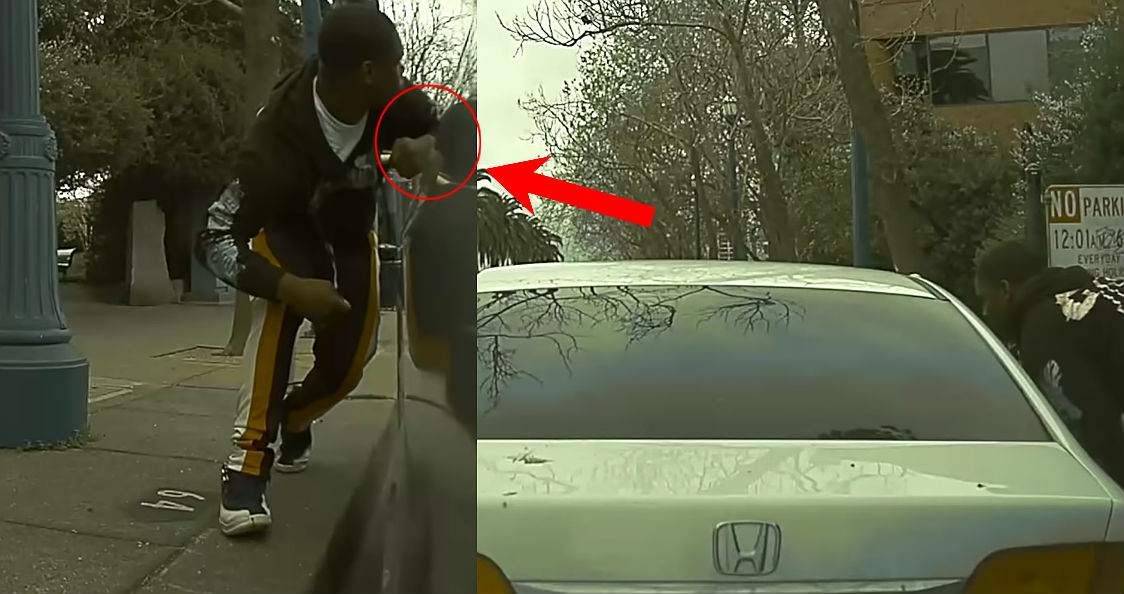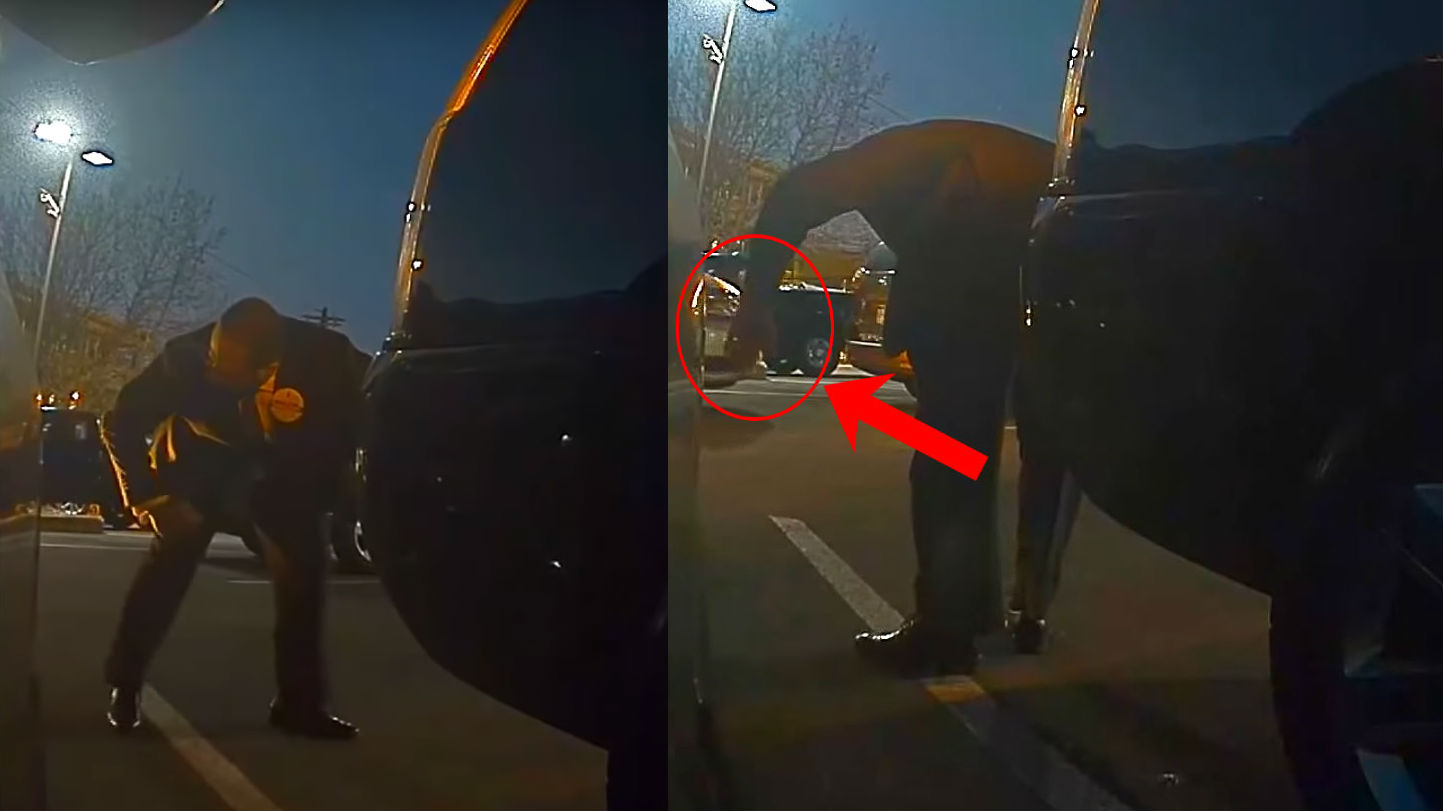Tesla’s Sentry Mode has been making headlines since it launched in February this year, capturing outrageous acts of vandalism, theft, and even a hit-and-run by a local politician. Despite the publicity, however, it doesn’t seem as though the unique security feature is necessarily moving things along on the legal side.
Police reports made by Tesla owners after becoming burglary victims are seeing long delays before investigations are made, if they are made to begin with. Altogether, this means that Sentry Mode isn’t necessarily giving Tesla owners any advantage over not having the feature at all. What can be done to change this?
One effective route thus far has been media attention. A burglary captured by Sentry Mode in April, for instance, was reported by a local ABC news station, and the suspect was arrested afterwards arguably in response to the public pressure surrounding the event. When the car’s owner originally turned the footage into police, he was simply informed that an officer “might” look into the incident. Of course, every incident can’t be handled this way, and it’s only the most egregious ones that capture enough interest for major media attention.
Obviously, judicial systems vary by region as do police policies and resources, all affecting the outcome of a break in report to include whether public attention is required for a quick result. A fair assessment should acknowledge these facts. But a tool like Sentry Mode should be able to deliver a more consistent legal result for Tesla owners using the feature – that is its primary purpose, is it not? Not only that, but if justice is served effectively based on Sentry Mode’s unique tools, it can finally have its desired effect of acting as a deterrent to thieves and other criminals made aware of Tesla cars’ video recording capabilities.

Here’s the scenario that’s playing out right now.
Imagine that your Tesla was broken into while you were out shopping. Your car’s app notified you of an intrusion, but you missed the thief getting away. Thank goodness you have a Tesla, you might think next. Sentry Mode recorded the entire event and the idiot who smashed your rear quarter window gave the car’s cameras a clear image of their face and the license plate of their getaway vehicle. You take the footage to the police where you expect an easy path to justice, except that’s not what happens.
“Someone will review your report in about 20-30 days,” an employee at the police station tells you when you file your theft report. If that’s not difficult enough to hear, others who’ve had similar instances with their Tesla vehicles confirm to you that they’ve had the same thing happen to them. This example isn’t fictional, either. A Tesla owner recently posted the experience on Reddit, detailing their frustration with getting a Sentry Mode video to the correct desk at their local police department.
The same Reddit user cited above proposed another solution for helping move these kinds of theft investigations along. Tesla’s app could provide a feature that automates the police report process.
In concept, following a criminal incident recorded by Sentry Mode, a programming script could run on the Tesla app to gather all pertinent information about the event. GPS data for the break in location, the owner’s name, address, and VIN number would be pulled first, then the owner could be prompted to add photos of the damage along with any witness information. A PDF or similar document would be generated, ready for printing and submission to the proper police authorities.

The Tesla owner would initiate this process with the push of a button on the car’s center touchscreen or from their phone. This solution is based on the idea that complete information in the hands of the right people might help to bring quicker legal results. Most of the tedious footwork would be done at an advantage to police.
Even better, police departments could adopt ‘dash cam friendly’ policies that made this type of reporting procedure seamless, perhaps providing a fax number, email address, or online submission form specifically for these types of events. The police department in Moorestown, New Jersey, for instance, already has an online reporting portal enabling the submission of anonymous tips, property damage, identity theft, lost property, retail crimes, and vehicle burglary reports, among others. A few experiences with the Sentry Mode reports would make it clear to authorities how much easier the cases were to investigate given the amount of information available, which could help bring better (and faster) legal results for the owners.
Expanding on that idea, perhaps a database containing reporting requirements and local police data could be maintained by Tesla owners as a community effort to make the feature more helpful and kept up-to-date. Many reporting forms are already available online, but copies of blank reports could be provided by local police departments to further streamline the data generated as suggested previously. The crafted app-made police report would be tailored for the police department local to where the break in took place.
This is something that would take time and effort, but once it became known that Tesla vehicles were being specifically targeted for theft, a major part of what drove the creation of Sentry Mode, the community came together to advise one another on preventing incidents, even compiling tip sheets on Internet forums and creating 3D-printable locking devices. It wouldn’t be a far stretch to see the community come together again to help bring justice for the break ins it previously worked together to prevent. A third-party app providing this report generation service is also a possibility.
The original rallying cry for a tool to help against break ins made its way up to Tesla CEO Elon Musk, and the response was eventually met with Bach’s Toccata and Fugue in D Minor. Perhaps a handy police report button is another possibility?

<!–
–>
